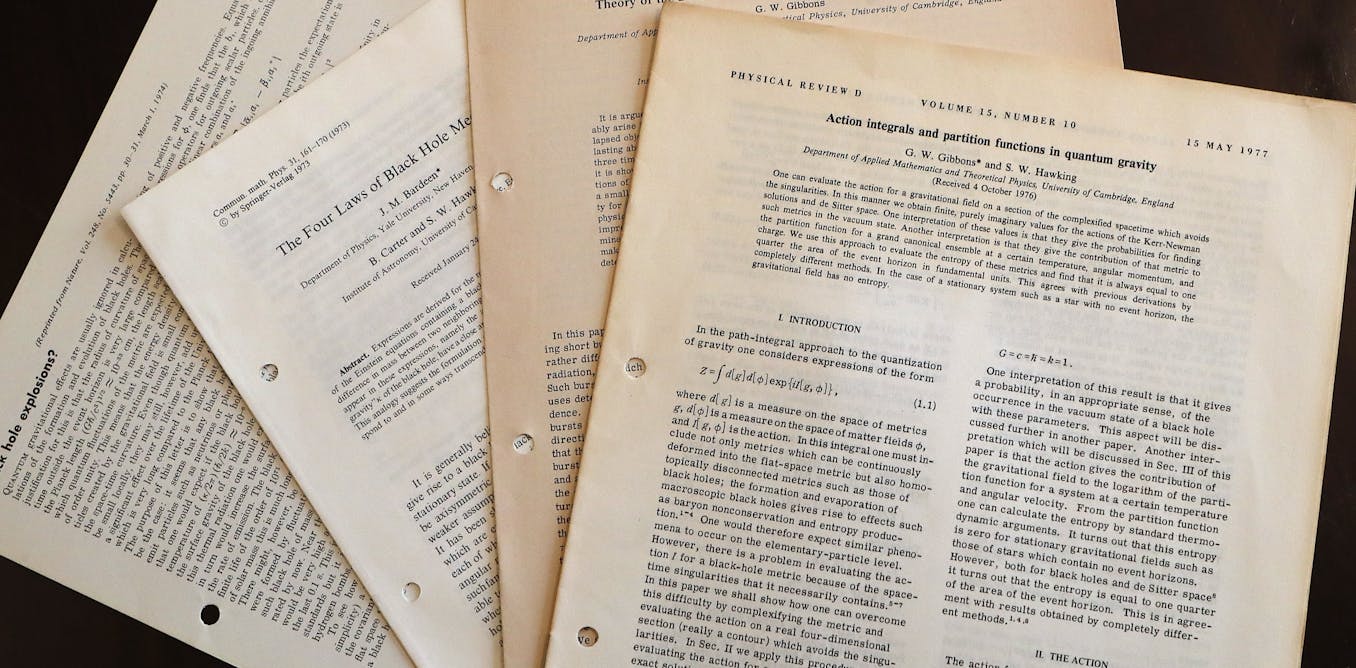Politics
What does Springfield, Illinois, in 1908 tell us about Springfield, Ohio, in 2024?
Lying about Black people is nothing new in political campaigning.
Despite the thorough debunking of false rumors that Haitian immigrants were eating cats and dogs in Springfield, Ohio, former President Donald Trump and his GOP allies insist on repeating the lies.
“If I have to create stories,” admitted JD Vance, Trump’s running mate, “that’s what I’m going to do.”
While many political observers believe that these lies have, as The New York Times columnist Lydia Polgreen described, finally “crossed a truly unacceptable line,” in fact, white politicians have told brazen, fearmongering, racist lies about Black people for over the past 100 years.
One of the more notorious lies occurred in 1908 in another Springfield, this one in Illinois. As a historian who studies the impact of racism on democracy, it’s my belief that what happened there and in other cities helps to clarify what Trump and Vance are trying to do in Springfield, Ohio, today.
Lying when everyone knows you’re lying seems to be the point.
New target, old message
Springfield, Illinois, Abraham Lincoln’s home town, was, in 1908, a working-class city of just under 50,000 people – about the same size as its modern counterpart in Ohio.
Because of the city’s manufacturing industries, Springfield was also an attractive place to live and work for Black men and women escaping the social oppression of the Deep South.
The Black population of Springfield had been growing by about 4% annually, and by 1908, roughly 2,500 Black people were living there to work in the city’s manufacturing plants. As the wealth of some Black families rose, so too did racist fears among whites that Black migrants were taking their jobs.
Rumors spread through false newspaper reports among white residents that a Black man had raped a white woman.
As the story went, a Black man broke through the screen door of a modest house in a white neighborhood. He supposedly dragged a 21-year-old white woman by her throat into the backyard, where he raped her. Or so the woman said.
A couple of weeks after the incident, the woman admitted she lied. There was no Black man. There was no rape. But by then, telling the truth was too late. The rumor had triggered a wave of anti-Black violence.
William English Walling, a white, liberal journalist from Kentucky, reported that Springfield’s white folks launched “deadly assaults on every negro they could lay their hands on, to sack and plunder their houses and stores, and to burn and murder.”
For two days, the violence raged, while white “prosperous Businessmen looked on” in complicit approval, Walling wrote. Several blocks in Black neighborhoods were burned, and at least eight Black men were killed.
One of the men killed was William K. Donnegan. The 84-year-old died after his white attackers slit his throat and then hanged him with a clothesline from a tree near his home.
As a dozen different rioters told Walling: “Why, the n—–s came to think they were as good as we are!”
Telling the truth about racist tropes
At the turn of the 19th century, racial tensions were most often expressed in sexual terms – Black men having sex with white women.
That sexual anxiety was part of what cultural historians call a “master narrative,” a symbolic story that dramatizes white nationalism and the belief that citizenship and its benefits were preserved for one racial group at the expense of all others.
One of the first to debunk this rape fantasy was Ida B. Wells, the Black editor and owner of the weekly “Memphis Free Press.”
In 1892, a white mob lynched one of her good friends, Thomas Moss, and two others associated with his cooperative Peoples’ Grocery store. The Appeal Avalanche, a white Memphis newspaper, wrote that the lynching “was done decently and in order.”

In her May 21, 1892, editorial about Moss’ death, Wells told a different story about “the same old racket – the new alarm about raping a white woman.”
Wells explained that she worried that people who lived outside of the Deep South might believe the lies about Black people.
“Nobody in this section of the country,” she wrote, not even the demagogues spreading rumors, “believe the old thread bare lie that Negro men rape white women.”
Political fearmongering
What happened in Wilmington, North Carolina, in 1898 was based on a deliberate, cynical election strategy of lies.
At the turn of the 20th century, North Carolina’s disaffected, poor working-class white Populists joined forces with Black Republicans to form what were known as the Fusionists.
In Wilmington, then the largest city in North Carolina, the Fusionists were able to vote out the white-nationalist Democratic Party in the early 1890s and became a symbol of hope for a democratic South and racial equality.
They also became a target for Democrats seeking to regain power and restore white nationalism.

The spark came in the summer of 1898 when Rebecca Felton, the wife of a Georgia congressman and a leading women’s rights advocate, gave an address to Georgia’s Agricultural Society on Aug. 11 that sought to protect the virtue of white women.
“If it needs lynching,” she said, “to protect a woman’s dearest possession from the ravening of beasts – then I say lynch; a thousand times a week if necessary.”
In response, Alexander Manly, the Black editor of The Daily Record, in Wilmington, followed the lead of Ida B. Wells and attacked the myths of Black men. Manly pointed out in his August 1898 editorial that poor white women “are not any more particular in the matter of clandestine meetings with colored men than are the white men with colored women.”
Democrats bent on stoking racial fears circulated Manly’s editorial throughout North Carolina before the November 1898 elections, decrying the “Outrageous Attack on White Women!” by “the scurrilous negro editor.”
If that wasn’t enough to stir up North Carolina Democrats, party officials sent the Red Shirts, their white nationalist militia, to Wilmington to overthrow the city’s biracial government, install all white officials and restore white rule.
To that end, a white mob destroyed Manly’s newspaper office, chased him and other Black leaders into exile, rampaged through Black neighborhoods and killed an untold number of Black men.
It was a white nationalist coup d’etat.
The great white protector
In his modern-day attempt to divide working-class white people from working-class Black people, Vance has urged his supporters to ignore “the crybabies” in the mainstream media.
“Keep the cat memes flowing!” he posted on X.
An estimated 67 million people watched the U.S. presidential debate on ABC and heard Trump angrily proclaim: “They’re eating the dogs. They’re eating the cats. They’re eating … the Pets of the people that live there.”
Once again, the old narrative is resurrected.
-

 Politics19h ago
Politics19h agoNebraska Senate May Be the Race No One Saw Coming
-

 Politics1d ago
Politics1d agoExclusive: Larry Hogan Approved Millions for His Firm’s Listed Clients as Governor
-

 Politics3d ago
Politics3d agoWhy Hand Counting Ballots Could Create an Election Disaster
-

 Politics3d ago
Politics3d agoHow Democrats Lost Ground on Voter Registrations Where It Matters Most
-

 Politics5d ago
Politics5d agoThe 10 Races That Will Determine Control of the Senate
-

 Politics6d ago
Politics6d agoMelania Trump Shares Her Views on Abortion in New Interview—and Donald’s Reaction
-

 Politics6d ago
Politics6d agoElon Musk Makes Animated First Appearance at a Trump Rally and Casts Election in Dire Terms
-

 Politics6d ago
Politics6d agoKamala Harris has spoken of her racial backgrounds − but a shared identity isn’t enough to attract supporters





















